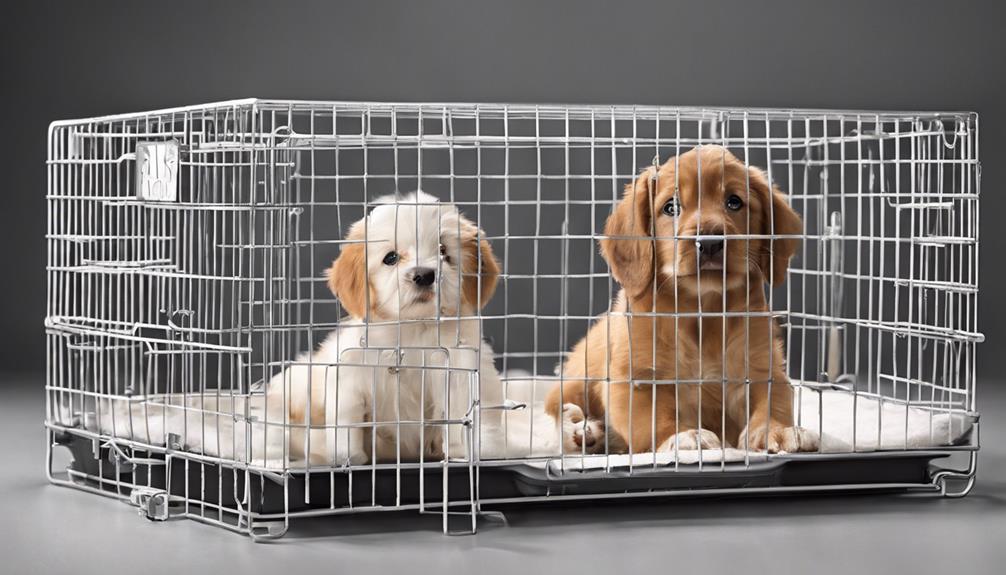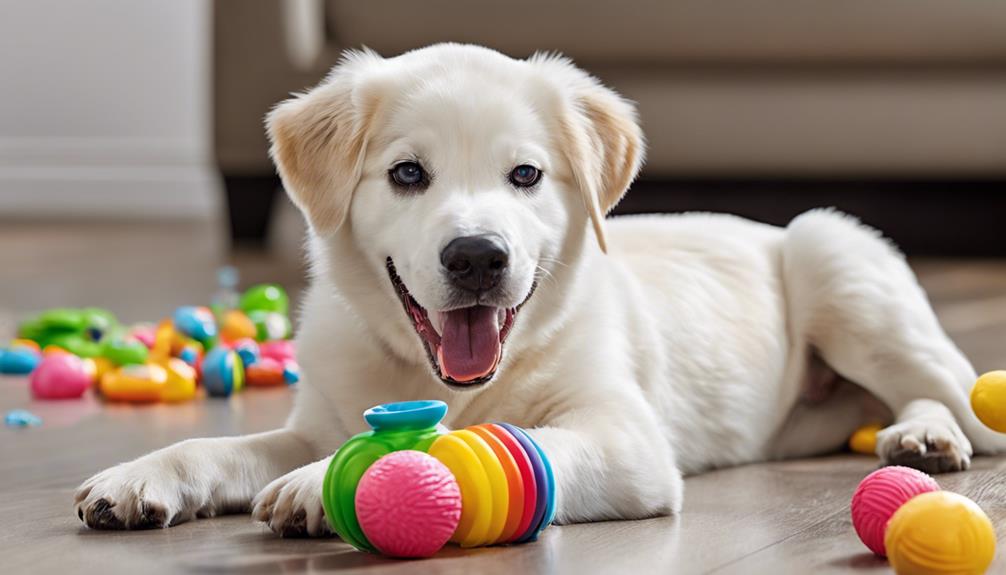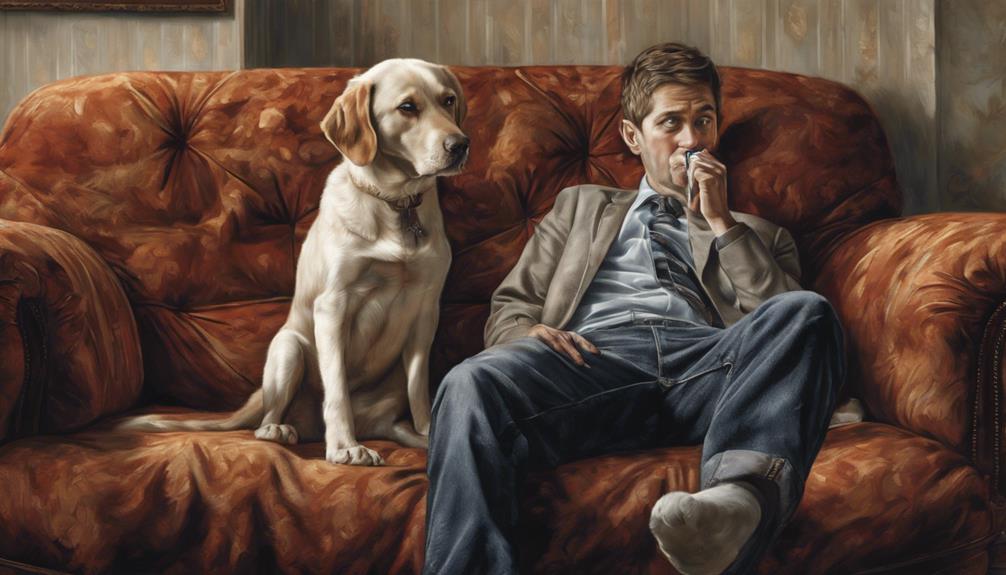Start a structured journey through the ultimate puppy crate training schedule designed for various ages! For puppies aged 12-16 weeks, aim for 2 hours during the day and 6 hours at night. As your puppy ages to 4-5 months, increase daytime crate time to 3 hours, with 8 hours at night. When your puppy reaches 6-7 months, extend daytime crate time to 4 hours while keeping 8 hours at night.
By 8-11 months, aim for 6 hours during the day and 8 hours at night. For pups over 12 months, consider up to 8 hours of daytime crate time and 10 hours at night. This schedule, tailored to your pup's age, sets a solid foundation for successful crate training, aiding in potty training, behavior encouragement, and a harmonious relationship with your furry companion.
Key Takeaways
- Adjust crate time based on age: 2 hours for 12-16 weeks, 4 hours for 6-7 months, up to 8 hours for over 12 months.
- Gradually increase nighttime crating hours as the puppy grows older.
- Provide a structured routine for daytime and nighttime crate training sessions.
- Use dividers to adapt the crate size as the puppy grows to ensure comfort and security.
- Include soft bedding, toys, and treats to create a positive association with the crate.
Benefits of Crate Training
Crate training benefits puppies by providing them with a secure and safe space to feel at ease and learn positive behaviors. It offers a haven where your puppy can relax, sleep, and retreat when feeling overwhelmed. This practice aids in house training by teaching your puppy to hold their bladder and bowels, promoting cleanliness in your home.
By following a schedule for crate training, you establish a routine that reduces anxiety and stress for your puppy, helping them adapt to their new environment. Positive reinforcement techniques, such as rewarding your puppy for entering the crate willingly, encourage good behavior and create a positive association with the crate. This method also helps in preventing destructive tendencies by setting boundaries and creating a sense of security for your puppy.
Additionally, crate training assists in reducing separation anxiety, making it easier for your puppy to cope with being alone and fostering independence.
Importance of Crate Training
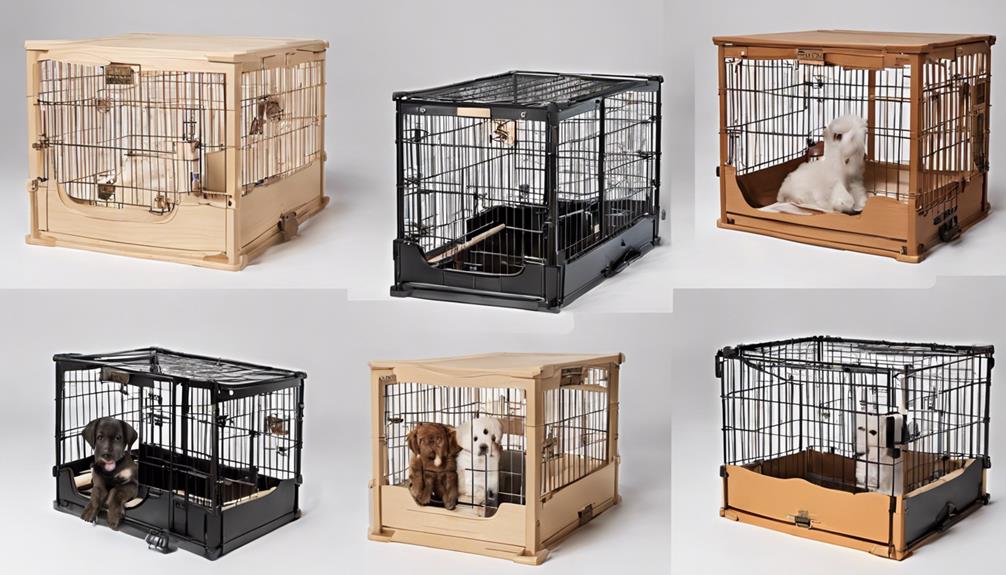
Crate training is essential for teaching your puppy proper behavior and creating a safe environment for them. It helps in establishing a routine for essential activities like feeding, potty breaks, and rest.
Following the right training process and tips will lead to a successful and harmonious relationship between you and your furry companion.
Crate Training Benefits
Establishing a routine through crate training for your puppy can greatly benefit their potty training and adjustment to your family environment.
The crate serves as a safe and secure space where your pup can feel protected and calm. By using the crate consistently, you help your dog understand boundaries and expectations.
This training method reduces anxiety and stress for your furry friend, providing them with a designated area to relax and unwind. Additionally, crate training promotes positive behavior by giving your dog a structured environment to follow.
This structured routine can prevent destructive behaviors in the long run, setting a foundation for a well-behaved and happy dog.
Training Process Overview
To successfully train your puppy, incorporating crate training into their routine is essential for fostering good behavior and creating a sense of security for your furry companion.
Introducing your new puppy to the crate training process gradually is vital. Start by allowing short periods for your puppy to get accustomed to the crate, gradually increasing the time as they become more comfortable.
Use the crate for potty breaks, mealtime, and when you can't directly supervise your puppy. It's important to establish a schedule for your puppy to stay in the crate to help them learn to control their bladder and bowels.
Consistency is key in puppy training, and crate training plays a significant role in shaping your puppy's behavior positively.
Tips for Success
When introducing your puppy to crate training, remember that consistency and patience are crucial for successful outcomes. To guarantee good crate training, follow these tips:
- Establish a crate schedule: Create a routine for your puppy to get accustomed to the crate.
- Use a crate for sleeping: Encourage your puppy to nap and rest in the crate to associate it with relaxation.
- House train your puppy: Utilize the crate as a tool for house training to avoid accidents.
- Provide pee breaks: Take your puppy out for bathroom breaks to prevent accidents in the crate.
- Avoid mishaps: Monitor your puppy's behavior and reactions to prevent incidents during crate training.
Establishing a Routine

Creating a consistent daily schedule for your puppy sets the foundation for successful crate training and overall well-being. Establishing a routine is vital for your puppy's development as it helps them anticipate meal times, potty breaks, and training sessions.
By following a structured schedule, you provide your puppy with a sense of security and stability, which is essential for their mental and emotional well-being. Consistency in routine training also aids in teaching your puppy house rules and boundaries, promoting positive behavior and reducing anxiety.
When your puppy knows what to expect each day, they can adapt more easily to their new environment and feel more at ease in their crate. Remember to stick to the schedule as closely as possible to help your puppy thrive and build a strong foundation for future training and behavior.
Reducing Anxiety and Destructive Behavior

To help your puppy manage anxiety, incorporating calming techniques like providing comforting toys or blankets in the crate can be beneficial.
When it comes to addressing destructive behaviors, offering appropriate chew toys and ensuring regular exercise can redirect their energy positively.
Anxiety Management Tips
Implementing calming activities before crating your puppy can effectively reduce anxiety levels and prevent destructive behaviors. To manage your puppy's anxiety, consider the following tips:
- Use soothing music or white noise in the crate.
- Engage in calming activities before crating.
- Provide a safe and comfortable space in the crate.
- Implement positive reinforcement techniques.
- Gradually increase crate time to reduce stress.
Destructive Behavior Solutions
Crate training your puppy can effectively reduce destructive behaviors and anxiety by providing a secure and calming environment. The routine established through crate training helps your puppy feel more relaxed and secure, promoting independence and teaching them to self-soothe. To assist you further, here is a table highlighting the benefits of crate training:
| Benefits of Crate Training | |
|---|---|
| Reduces Anxiety | Prevents Destructive Behaviors |
| Establishes Routine | Promotes Independence |
Calming Techniques for Puppies
For puppies experiencing anxiety and displaying destructive behavior, incorporating calming techniques is essential for promoting relaxation and well-being. To help your puppy relax and reduce anxiety, consider the following strategies:
- Provide a cozy blanket or shirt with your scent to offer comfort.
- Use soothing music or white noise to create a calming environment in the crate.
- Establish a consistent bedtime routine with gentle activities for relaxation.
- Offer interactive toys or puzzle feeders to keep your puppy mentally stimulated and calm.
- Practice positive reinforcement by rewarding calm behavior to promote relaxation and reduce anxiety.
Positive Behavior Promotion
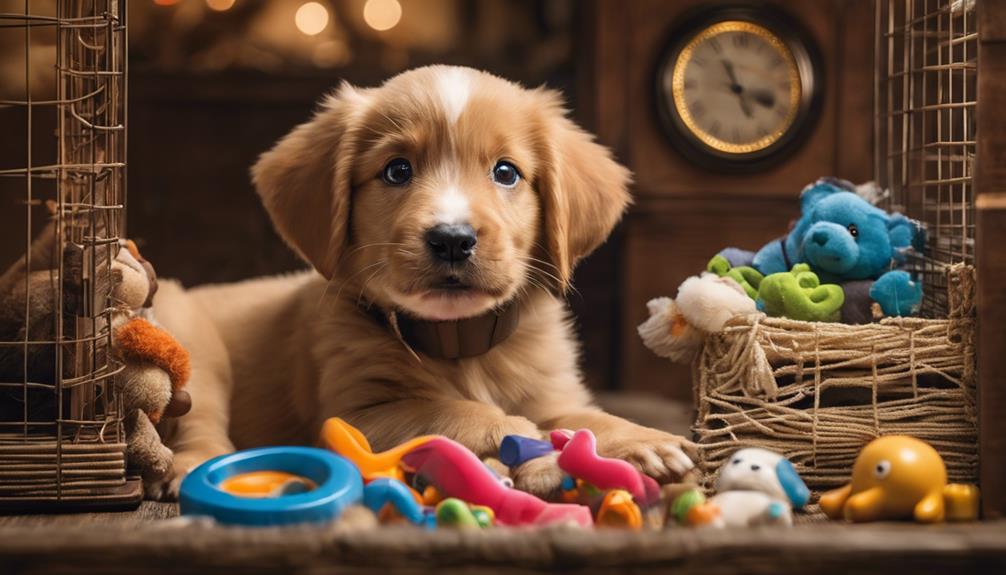
Wondering how puppy crate training can foster positive behavior in your furry companion?
Crate training plays an essential role in promoting positive behavior by setting clear boundaries and establishing consistent routines for your puppy. This structured environment helps reduce feelings of anxiety and stress by providing your puppy with a safe and secure space of their own. By giving them a designated area to retreat to, crate training fosters a sense of independence in your puppy while also minimizing separation anxiety.
Moreover, crate training aids in preventing destructive behaviors such as chewing or soiling in the house. It promotes a feeling of security and comfort, which can lead to a well-behaved and confident pet. Additionally, the skills acquired through crate training can be beneficial for managing good behavior during travel or vet visits.
Embracing crate training as an important behavior promotion tool can greatly contribute to the overall well-being and development of your puppy.
Creating a Safe Space
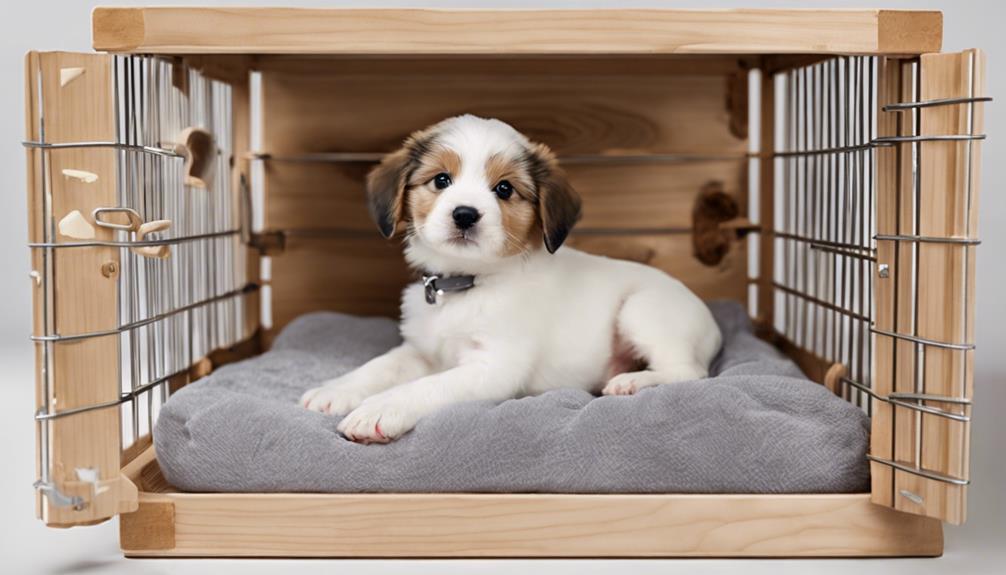
To establish a secure haven for your puppy, consider creating a designated safe space through crate training. A puppy's crate not only provides a secure environment but also offers a den-like retreat that aligns with their natural instincts. Here are five key benefits of utilizing crate training to create a safe space for your furry friend:
- Reduced Stress and Anxiety: The crate acts as a comforting sanctuary where your puppy can feel safe and relaxed.
- Enhanced Security: A properly introduced crate becomes a secure area where your puppy can seek refuge whenever they feel overwhelmed.
- Personal Retreat: The crate serves as a personal retreat for your puppy, allowing them to unwind and recharge.
- Comfort and Safety: By associating the crate with positive experiences, your puppy will view it as a cozy and safe haven.
- Sense of Ownership: Having a designated space can instill a sense of ownership in your puppy, promoting a feeling of security and belonging.
Facilitating Travel and Vet Visits
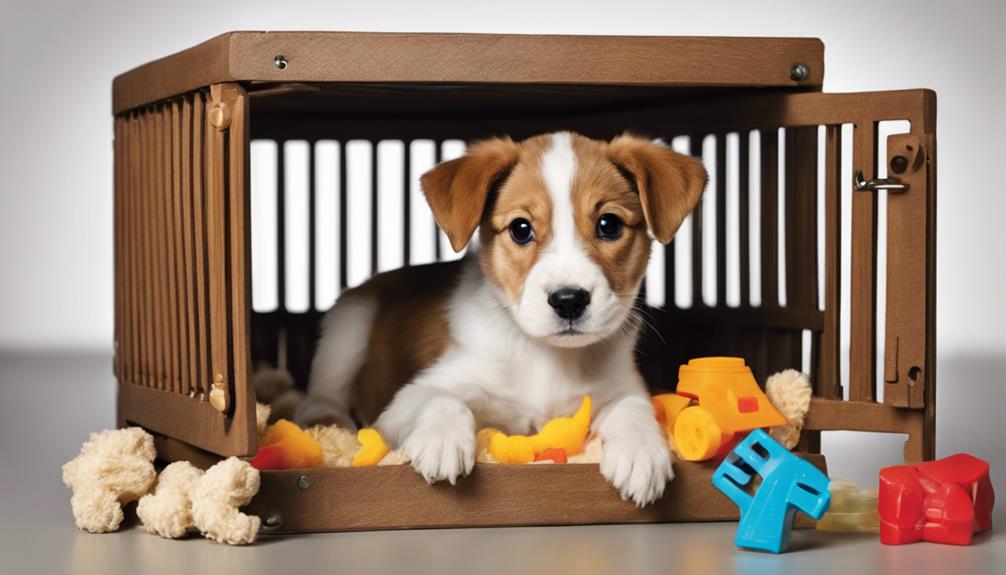
Establishing a secure haven for your puppy through crate training can greatly facilitate stress-free travel and vet visits. Crate training helps your puppy feel comfortable and safe during travel preparation and vet visits by providing a familiar space. This familiarity reduces stress and anxiety, making the experience less overwhelming for your furry friend. When used for travel, crates guarantee secure transport in cars, keeping your puppy safe and relaxed throughout the journey.
Training your puppy to be at ease in the crate creates a positive association with trips and vet visits, promoting their overall well-being. By using crates for travel and vet visits, you help your puppy feel secure and protected in unfamiliar environments, ultimately decreasing their stress levels. Remember, a well-trained puppy in a crate is a happy and calm traveler, making the entire experience smoother for both of you.
Structured Training Schedule by Age
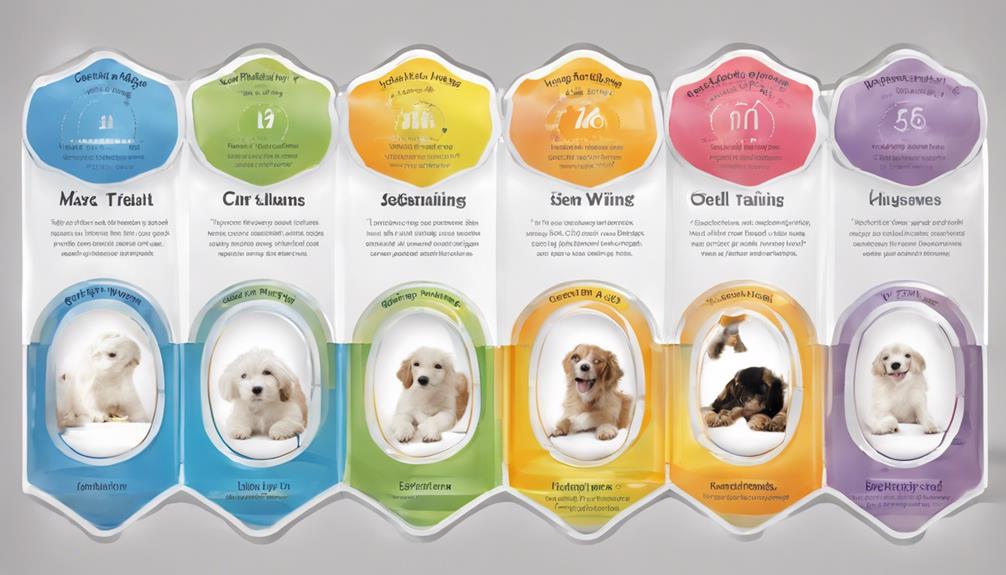
When structuring your puppy's training schedule by age, make sure to crate them for appropriate durations during the day and at night to promote a comfortable and secure environment. Different age groups require varying hours of crate training to guarantee their well-being and development. Follow these guidelines for a structured training schedule:
- 12-16 weeks: Crate your puppy for 2 hours during the day and 6 hours at night.
- 4-5 months: Increase daytime crating to 3 hours and nighttime crating to 8 hours.
- 6-7 months: Extend daytime crating to 4 hours while keeping nighttime crating at 8 hours.
- 8-11 months: Allow your puppy to be crated for 6 hours during the day and maintain 8 hours at night.
- Over 12 months: Crating can last up to 8 hours during the day and 10 hours at night.
Setting Up for Long-Term Well-Being
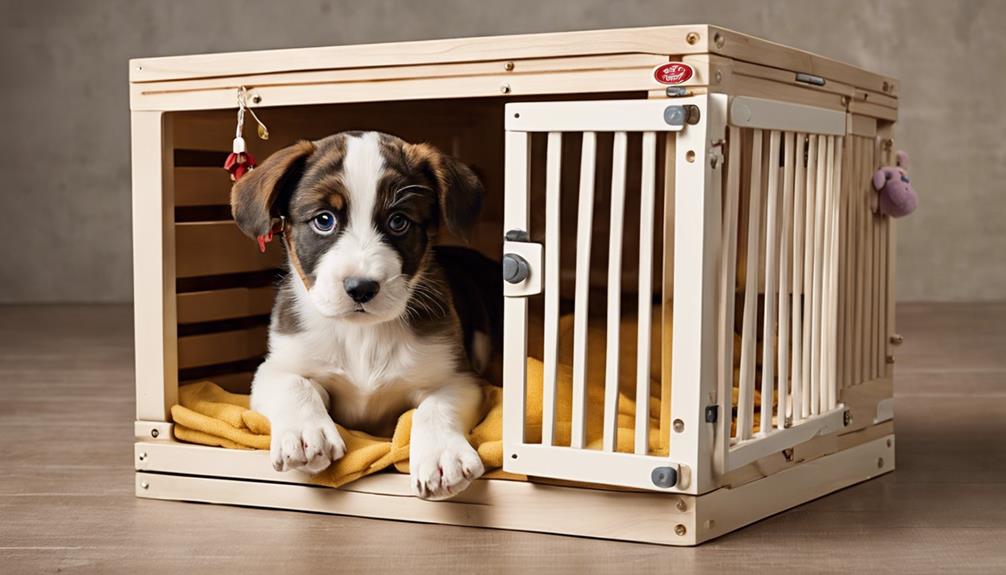
For guaranteeing your puppy's long-term well-being, carefully choose a crate that suits their current size and allows for future growth. Selecting a crate that can be adjusted with dividers as your puppy grows will prevent the need for frequent replacements, providing a consistent and secure space for your pet.
Make sure the crate setup includes soft bedding, engaging toys, and high-value treats to establish a positive association with their new environment. Placing the crate in a quiet, low-traffic area of your home will offer a safe and calming retreat for your puppy to relax and rest.
Regularly check the crate's size and condition to ensure it continues to meet your puppy's needs as they develop. By setting up the crate thoughtfully and considering your puppy's long-term comfort, you're laying the foundation for successful crate training and overall well-being.
Frequently Asked Questions
What Is a Good Crate Training Schedule for Puppies?
For a good crate training schedule for puppies, start by gradually increasing crate time based on age. Aim for 2 hours during the day and 6 hours at night for 12-16 weeks old, adjusting as they grow.
Is a 6 Month Old Puppy Too Old to Crate Train?
At 6 months old, your pup is just ripe for crate training. It's not too late! Remember, consistency and patience are key. Set routines, be firm yet gentle, and watch as your furry friend learns and grows.
Should I Put My 8 Week Old Puppy in a Crate at Night?
Yes, you should put your 8-week-old puppy in a crate at night. Remember to keep it short and positive, gradually introducing the crate during the day. Use treats and comfort items to create a secure environment.
How Long Can You Leave a 8 Week Old Puppy in a Crate?
You can leave an 8-week-old puppy in a crate for about 2 hours during the day and up to 4 hours at night. Remember, puppies need frequent bathroom breaks due to limited bladder control at this age.
Can the Ultimate Puppy Crate Training Schedule be Adjusted for Working Owners?
Yes, the ultimate puppy crate training schedule can definitely be adjusted for working owners. It’s important to consider your pup’s needs and schedule in regular bathroom breaks and exercise. With a few modifications, even working owners can successfully train their puppies using a crate training schedule.
Conclusion
To sum up, crate training is a valuable tool for raising a well-behaved and happy puppy. Did you know that 57% of dogs who aren't properly crate trained develop separation anxiety?
By following a structured training schedule and creating a safe space for your puppy, you can help reduce anxiety, promote positive behavior, and set them up for long-term well-being.
Remember, consistency and patience are key when it comes to crate training your furry friend.
